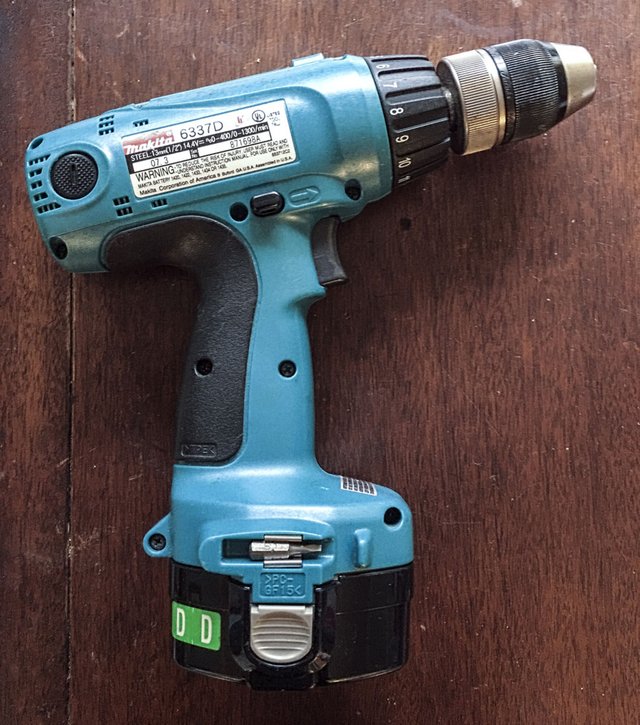This is a Makita Cordless drill. A slightly older model. A bit bulky and heavy compared to the newer offerings. But it's a Makita, it's still running just fine.

At the front of the drill is the chuck. This is a keyless chuck so you just use your wrist to tighten or loosen the chuck. Securing or releasing the bit or driver as the case may be.

Next up is the trigger. The more you squeeze the trigger, the faster the drill spins. Some drills have a little wheel here or some other device to set an upper limit on how fast the drill can turn. Just above the trigger is a nifty mechanism to change the direction of rotation. When pushed right, the drill rotates counter clockwise, loosening. When pushed left it rotates clockwise, tightening.

This is the clutch. It is the most important part! This can not be over stressed. Unlike the various screws and bolts which you will use to assemble or fasten, which can be over stressed.
In the last week, 3 out of 5 sites that I visited were utter disasters. The previous techs or engineers had just ramboed on in there with their drills and beat the daylights out of the poor bolts. Hamering those suckers into the sheet metal as if they were paid not by the hour, but by torque foot pounds.
The clutch helps you avoid this. You can set the clutch to a low number and it will simply refuse to tighten past a certain point. If you set the clutch to a higher number it will be able to deliver more torque to the business end.
The goal here is to never use more torque than appropriate.
For example;
I'm drilling into wood. I'll set the clutch high. I don't want the bit to stop spinning part way through and seize up in the hole.
Okay, next example. I'm securing networking equipment into a telco rack. I'll set the clutch very low. I want the screws to go all the way in, flush. But I don't want to give any tech or engineer who follows in my footsteps undue difficulty loosening the bolts which secure the routers, switches etc to the frame.
Also, you want the drill to give up powering that screw home if it starting to crossthread. A straight on thread will have a lot less resistance to turning than a cross threaded screw.

In other words. If your drill's clutch is set to anything above 8, you had better be putting holes in wood with that thing.
If you are working in a Network Operations Center, MDF, IDF or MPOE keep that sucker on 5 or below.
Well my friend it's good to see that you r helping people by sharing information about . How we can use this product.
Well if possible for you @russdaren plz do a visit over my blog and upvote if you like.
Downvoting a post can decrease pending rewards and make it less visible. Common reasons:
Submit
This post received a 28% upvote from @morwhale team thanks to @russdaren! For more information, click here! , TeamMorocco! .
Downvoting a post can decrease pending rewards and make it less visible. Common reasons:
Submit
@originalworks
Downvoting a post can decrease pending rewards and make it less visible. Common reasons:
Submit
The @OriginalWorks bot has determined this post by @russdaren to be original material and upvoted(2%) it!
To call @OriginalWorks, simply reply to any post with @originalworks or !originalworks in your message!
Downvoting a post can decrease pending rewards and make it less visible. Common reasons:
Submit
Stunning photo captures , appreciate your work and writing @russdaren . keep it up :)
Downvoting a post can decrease pending rewards and make it less visible. Common reasons:
Submit